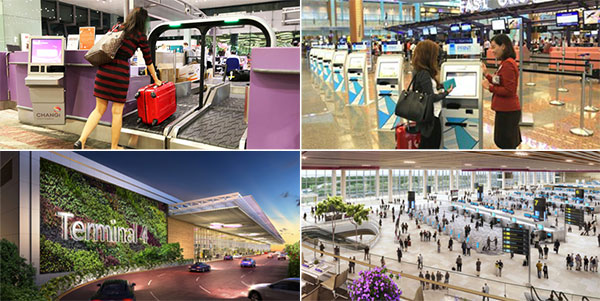
In the passenger experience stakes, Singapore’s Changi Airport sets the highest of benchmarks, one which most other airports in Asia and beyond can only aspire to, yet Changi Airport Group (CAG), which manages and operates Asia’s seventh-busiest airport, continues to invest heavily in enhancing both operational efficiency and passenger experiences. As FTE found out from Steve Lee, Chief Information Officer and Senior Vice President (Technology), CAG, new technology has a crucial role to play going forward.
In August, new self-service check-in and bag tagging facilities went live in Terminal 2 for Singapore Airlines and SilkAir passengers as part of the ongoing Fast and Seamless Travel (FAST) initiative, following on from Changi Airport’s trial of self-service bag drop alongside Jetstar Asia in Terminal 1 in 2014. Lee revealed to FTE that uptake for these self-service solutions has been positive and continues to rise. “Changi Airport will be building on the momentum to introduce FAST in Terminal 3 for Singapore Airlines, and will be progressively bringing other carriers onboard FAST in the coming months,” he stated.
Lee, who will deliver a presentation at FTE Asia EXPO 2015 in Singapore (17-19 November), also stressed the important fact that “self-service does not necessarily mean poorer service, nor does it mean lower service standards” – a vital point for an airport that prides itself on its positive customer service reputation. “In fact, self-service alleviates the amount of manual processing work done by check-in agents today,” he said, “freeing them up to provide higher value-added services such as addressing passengers’ other queries they may have pertaining to their travel journeys.”
Leveraging biometrics in the new T4

CAG’s plans to leverage the latest technology to drive efficiency extend far beyond self-service bag drop and self-tagging. Back in July, it was announced that the new Terminal 4, which is due to open in 2017, will make extensive use of facial recognition technology also as part of the FAST programme.
When quizzed by FTE on exactly how facial recognition technology will be used, Lee explained: “Today, departing passengers are required to verify their identity at three locations – when they check-in their luggage, clear border control and just before they board the aircraft. These are performed manually by the ground handling agents or immigration officers.
“The adoption of facial recognition at the T4 self bag-drop machines, integrated border control lanes and self-boarding gates will allow the security checks to be fully automated. By leveraging technology, we expect clearance through these touch points to be speedier, thereby enhancing operational efficiency while reducing the reliance on manpower. More importantly, our self-service processes are being designed with the passengers in mind – intuitive and user-friendly. The improved ergonomics and interactivity, coupled with the shorter queuing time, is expected to enhance our passengers’ experience at Changi.”
Single passenger token
With biometric technology central to the plans for Terminal 4, this could present an opportunity for CAG to pursue the concept of a biometric-based single passenger token, similar to what is being trialled by KLM at Aruba Airport. Lee, who will offer detailed insight into CAG’s technology-focused plans in his presentation at FTE Asia EXPO 2015, admitted that this is on the Group’s radar.
“With the possibility of a single biometric token looking set to become a reality in the near future, we are indeed exploring how it can be adopted at Changi Airport – to further improve the overall facilitation of passengers but without compromising on security outcomes,” he said. “A key success factor would be the strong collaborative spirit among all agencies at the airport.”
Exploring use cases for wearable technology
While the development of a biometric-based single passenger token will require a great deal more investigation before any live pilots can even be considered, trials have already been undertaken of another technology that has been touted as holding significant potential for airports and airlines – wearable technology.
Others in the region have made public their trials of wearables in recent months, ranging from Japan Airlines at Tokyo Haneda Airport to Spring Airlines onboard the aircraft, and CAG’s Lee explained that tests have been undertaken by CAG, but “there are no concrete use cases for full implementation yet”. He is, however, confident that wearables can help bring about improvements once the right use cases are identified.
“When wearable technologies are integrated seamlessly with mobile services, the passenger experience can be significantly enhanced,” he said. “For example, by delivering timely and relevant notifications to passengers about their flight status, guiding them in wayfinding or highlighting events or promotions around them. This will give passengers not just the wow factor but also the extra personal touch that a mobile application alone cannot deliver.”
While the exact nature of how smartwatches and smartglasses can be used to improve operations and customer experiences remains cloudy, there can be no doubting the impact that technology-led innovation is set to have on the highly regarded “Changi Experience” in the months and years ahead. While self-service bag drop and self-tagging are already simplifying passenger processing, the widespread use of biometrics and the potential creation of a single passenger token have the potential to truly revolutionise the airport experience.






